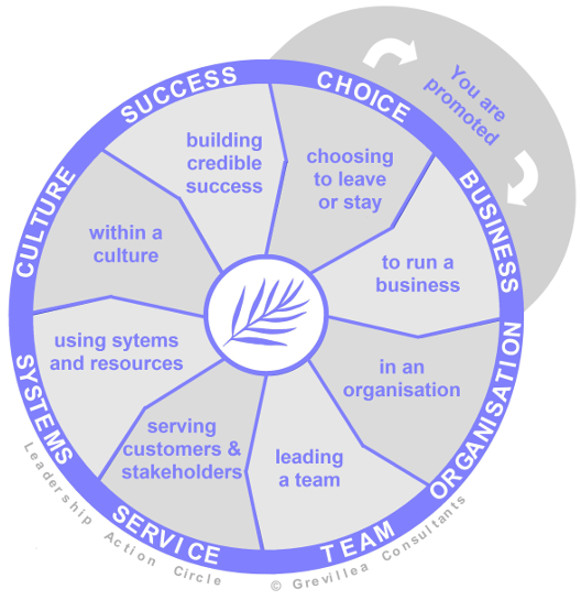Engaging key external relationships during transition
Action
Establish good relationships with internal and external stakeholders who can influence the success of your business. Your boss and team members can help identify people to include on your list. Consider a range of stakeholders who can influence the performance of your business or consume your resources. These include suppliers, customers, communities of interest and other parts of your organisation.
Risks/Opportunities/Surprises
Leaders often think of stakeholders as organisations or groups. There are usually one or two key people in these who influence what the others think. These are the people to target.
Establish good relationships with internal and external stakeholders who can influence the success of your business. Your boss and team members can help identify people to include on your list. Consider a range of stakeholders who can influence the performance of your business or consume your resources. These include suppliers, customers, communities of interest and other parts of your organisation.
Risks/Opportunities/Surprises
Leaders often think of stakeholders as organisations or groups. There are usually one or two key people in these who influence what the others think. These are the people to target.
Action
Make it a priority to get in early to introduce yourself and build relationships with key stakeholders. It is more important to listen to stakeholders than give them your view of the world. This will build a sense of respect and provide you with good information about your business. You may need to schedule a few meetings a week to get through your stakeholders list in a reasonable amount of time.
Risks/Opportunities/Surprises
Word will get around once you start meeting with people. Make sure you prioritise your schedule with a sense of the local politics and pecking order so you minimise the risk of offending a key player. This risk probably cannot be removed altogether but can be managed.
Make it a priority to get in early to introduce yourself and build relationships with key stakeholders. It is more important to listen to stakeholders than give them your view of the world. This will build a sense of respect and provide you with good information about your business. You may need to schedule a few meetings a week to get through your stakeholders list in a reasonable amount of time.
Risks/Opportunities/Surprises
Word will get around once you start meeting with people. Make sure you prioritise your schedule with a sense of the local politics and pecking order so you minimise the risk of offending a key player. This risk probably cannot be removed altogether but can be managed.
Action
Create a map of stakeholders based on your meetings, noting who they are and linking their impact on your business with their priorities. Identify where both their rational and emotional motives link to your business outcomes. Look for ways to overcome areas where your respective interests create obstacles for each other. Try to replace these with opportunities to generate mutually beneficial outcomes.
Risks/Opportunities/Surprises
Knowing what your stakeholders are like and being friendly is not enough. Friendliness does not equal cooperation and trust. You must work on these relationships so they contribute achieving outcomes.
Your goal is to emotionally engage your customers, which is the basis of customer loyalty. This will usually be more than the technical quality of your work. Find out about their non-work interests, their values, their goals and legacies and what they like and dislike about your organisation and its competitors. More constructive relationships will emerge if you can engage and respect the whole person.
Create a map of stakeholders based on your meetings, noting who they are and linking their impact on your business with their priorities. Identify where both their rational and emotional motives link to your business outcomes. Look for ways to overcome areas where your respective interests create obstacles for each other. Try to replace these with opportunities to generate mutually beneficial outcomes.
Risks/Opportunities/Surprises
Knowing what your stakeholders are like and being friendly is not enough. Friendliness does not equal cooperation and trust. You must work on these relationships so they contribute achieving outcomes.
Your goal is to emotionally engage your customers, which is the basis of customer loyalty. This will usually be more than the technical quality of your work. Find out about their non-work interests, their values, their goals and legacies and what they like and dislike about your organisation and its competitors. More constructive relationships will emerge if you can engage and respect the whole person.
Return to the Overview page.
